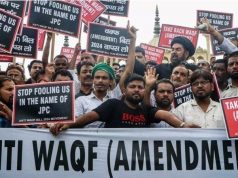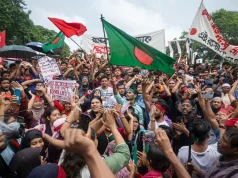The media plays a significant role in shaping public opinions and influencing electoral outcomes. In the 2008 US presidential election, politicians in the United States began using social media to connect with voters. Former President Barack Obama effectively utilized social media during the 2008 and 2012 elections to engage with young voters (Bimber, 2014). One key factor in Obama’s success was his skillful use of social media platforms to connect with voters across the country. In India, the Lok Sabha elections of 2014 and 2019 saw an unprecedented use of social media by both netizens and politicians. The 2014 Lok Sabha election was even referred to as India’s first social media election, while the 2019 general election was dubbed the first WhatsApp election (Bengani, 2019). In both of these elections, social media played a significant role in connecting voters with politicians. The impact of social media on electoral outcomes is debatable, but it is clear that these platforms bring up important issues during elections.
The BJP is known as a tech-savvy political party. Since its formation in the 1980s, the party has been using technology for campaigning purposes. Initially, the BJP distributed CDs, cassettes, and VCs for political campaigning. However, with the rise of social media platforms, the party was quick to adopt these platforms for political campaigning in India. During the 2014 and 2019 Lok Sabha elections, the BJP emerged as the dominant party on social media platforms, surpassing all other political parties (Bansal, 2019). Additionally, the BJP was the highest spender on political advertisements in India (NDTV, 2019). In his book “2019: How Modi Won India,” Rajdeep Sardesai states that social media and cheap data services played a significant role in helping the BJP win the 2019 Lok Sabha election. Several studies have also highlighted the negative impact of social media during these elections, with the spread of misinformation and hatred. While other political parties such as the INC and AAP were also active on social media, they were not as dominant as the BJP.
The Lok Sabha elections of 2024 in India are scheduled to take place from April 19 to June 1, 2024. The elections will be conducted in seven stages to elect 543 members of the Lok Sabha. The votes will be tallied, and the results will be announced on June 4, 2024. This current election is the largest in the world, with a total of 960 million eligible voters (Press Trust of India & Business Standard, 2024). Approximately half a billion Indians are active on social media platforms, with the majority using WhatsApp, YouTube, or both (news.umich, 2024). The influence of social media cannot be ignored. A remarkable aspect of the 2024 elections is the unprecedented use of social media analytics and targeted advertising. AI-powered computers sift through vast quantities of user data to micro-target specific demographics with tailored political communications. Political parties may employ this personalized strategy to craft messages that resonate with specific voter demographics and optimize the impact of their campaigns.
Political players are utilizing digital platforms to influence voters, shape narratives, and even manipulate public opinion. By leveraging social media platforms, politicians and political parties can now connect with a larger audience, disseminate their ideas more effectively, and garner support. With the power to instantly reach millions of individuals, platforms like WhatsApp, Instagram, Facebook, and X have become indispensable tools in political campaigns.
The major political parties in India, such as the BJP, INC, TMC, and AAP, have actively embraced social media as a platform for political communication. Among these parties, the BJP has emerged as a dominant force in leveraging social media during the ongoing 2024 Lok Sabha election (Paliwal, 2024). Recognizing the importance of digital outreach, the BJP has strategically cultivated a strong presence across various social media channels, using a wide range of tactics. One notable strategy employed by political parties, particularly the BJP, is the use of social media influencers, including comedians, musicians, vloggers, and athletes, to disseminate their messages to the public. According to a report by The Hindu, Prime Minister Narendra Modi has reached out to hundreds of social media celebrities since last year, many of whom have substantial followings on platforms like Instagram or YouTube. Some of these influencers include Maithili Thakur, a popular folk singer promoting Hindu culture (Shweta & Kmaneck, 2024), Amit Bhadana, a comedian and writer, and Ankit Baiyanpuria, a YouTuber. These influencers have millions of followers on social media. Many of them endorse the right-wing ideology of the Bharatiya Janata Party (BJP) and actively promote Hindu-majority culture. Critics argue that the BJP, led by Prime Minister Narendra Modi, has exploited the massive followings of these influential figures in various fields, such as music, culture, fashion, and fitness, to further their political agenda. They also express concerns about the possibility of influencers unquestioningly endorsing the ruling party in order to gain more followers and generate income from their social media posts (Shweta & Kmaneck, 2024). Furthermore, the BJP has been the top spender on digital advertisements during the ongoing 2024 Lok Sabha election.
While the BJP boasts about its prominent digital campaign for the upcoming 2024 election, the Congress party continues to persistently and diligently strive for its own brilliance. The Congress has established a network where they collaborate with like-minded individuals to produce content that aligns with their ideals. On platform X, there is an ongoing online struggle between influencers who endorse the Congress and those who endorse the BJP. According to confidential sources within the Congress party, their social media staff promptly creates material within 24 hours of significant events occurring nationwide. The Congress utilizes social media platforms to disseminate its messages and critique the BJP for issues such as unemployment, corruption, inflation, seeking votes on religious grounds, and spreading hatred.
In the 2024 Lok Sabha election, the Aam Aadmi utilizes various social media channels, such as X, Facebook, and Instagram, to convey its messages to voters, share events and policies, and mobilize supporters by responding to their comments and messages. After the release of Arvind Kejriwal from jail on bail, the party has shared speeches of Arvind Kejriwal on its social media platforms. In these speeches, he criticizes the BJP, encourages the INDI alliance, and asks people for their votes and support.
The All-India Trinamool Congress has also demonstrated an active presence on social media platforms leading up to the 2024 Lok Sabha elections. The party primarily focuses on platforms like Facebook and YouTube, devoting significant resources to these channels. A member of the Trinamool campaign affiliated with the Indian Political Action Committee (I-PAC) highlighted that YouTube’s prominence has substantially grown throughout the state. Their digital campaign prioritizes video content, often presenting it in Seconds or shorter formats, aligning with the prevailing trend of segmented and concise videos. According to the party, this approach successfully captures attention in a brief period of time.
Other national and regional parties also have a notable or minimal presence on social media platforms. They are endeavoring to disseminate their narratives and attract voters to support them. Social media has emerged as a new platform for political communication between politicians and voters, particularly during elections. As social media continues to shape the political landscape, its role in elections will remain crucial and contentious. The challenge ahead lies in responsibly leveraging these platforms to foster informed and engaged electorates while mitigating the risks of misinformation and polarization.
References






